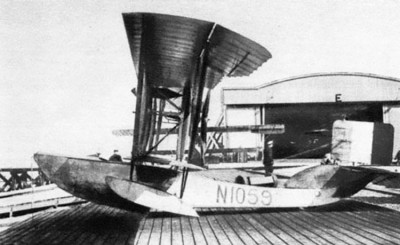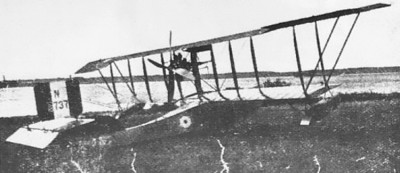| Název: Name: | FBA Type B | FBA Type B |
| Originální název: Original Name: | FBA Type B | |
| Kategorie: Category: | průzkumný/pozorovací letoun | reconnaissance/scout aeroplane |
| Výrobce: Producer: | DD.MM.1914-DD.MM.191R Franco-British Aviation Co. Ltd., Argenteuil DD.MM.1915-DD.MM.191R Gosport Aviation Co. Ltd., Gosport DD.MM.1915-DD.MM.191R Akciová společnost vzduchoplavectví V. A. Lebeděv, Petrohrad | |
| Období výroby: Production Period: | DD.MM.1914-DD.MM.191R | |
| Vyrobeno kusů: Number of Produced: | 120+ FBA 60 Gosport 34 Lebeděv? | |
| První vzlet: Maiden Flight: | DD.10.1914 | |
| Osádka: Crew: | 2 | |
| Základní charakteristika: Basic Characteristics: | ||
| Vzlet a přistání: Take-off and Landing: | CTOL - konvenční vzlet a přistání | CTOL - conventional take-off and landing |
| Uspořádání křídla: Arrangement of Wing: | jednoplošník | monoplane |
| Uspořádání letounu: Aircraft Concept: | klasické | conventional |
| Podvozek: Undercarriage: | pevný | fixed |
| Přistávací zařízení: Landing Gear: | člunový trup | flying boat |
| Technické údaje: Technical Data: | ||
| Hmotnost prázdného letounu: Empty Weight: | 574 kg | 1265 lb |
| Vzletová hmotnost: Take-off Weight: | 907 kg | 2000 lb |
| Maximální vzletová hmotnost: Maximum Take-off Weight: | ? kg | ? lb |
| Rozpětí: Wingspan: | 13,71 m | 44 ft 11 ¾ in |
| Délka: Length: | 9,14 m | 29 ft 11 ⅞ in |
| Výška: Height: | 2,90 m | 9 ft 6 ⅛ in |
| Plocha křídla: Wing Area: | 32,00 m2 | 344.45 ft2 |
| Plošné zatížení: Wing Loading: | ? kg/m2 | ? lb/ft2 |
| Pohon: Propulsion: | ||
| Kategorie: Category: | pístový | piston |
| Počet motorů: Number of Engines: | 1 | |
| Typ: Type: | Gnome Delta o výkonu 74 kW/100 k | Gnome Delta, power 98 hp |
| Objem palivových nádrží: Fuel Tank Capacity: | ? | ? |
| Výkony: Performance: | ||
| Maximální rychlost: Maximum Speed: | 109 km/h v ? m | 68 mph in ? ft |
| Cestovní rychlost: Cruise Speed: | 96 km/h v ? m | 60 mph in ? ft |
| Rychlost stoupání: Climb Rate: | 1,83 m/s | 360 ft/min |
| Čas výstupu na výšku: Time to Climb to: | 30 min do 4000 m | 30 min to 13123 ft |
| Operační dostup: Service Ceiling: | ? m | ? ft |
| Dolet: Range: | 300 km | 186 mi |
| Maximální dolet: Maximum Range: | ? km | ? mi |
| Výzbroj: Armament: | 0-1x pohyblivý kulomet Lewis ráže 7,7 mm 2x 150 kg puma | 0-1x flexible .30 in Lewis machine gun 2x 331 lb bomb |
| Uživatelské státy: User States: | | |
| Poznámka: Note: | - | - |
| Zdroje: Sources: | Davilla, James J. Soltan, Arthur M. French Aircraft of the First World War. Flying Machines Press, Stratford 1997. ISBN 0-9637110-1-0. Treadwell, Terry C. British & Allied Aircraft Manufacturers of the First World War. Amberley Publishing, Stroud 2011. ISBN 978-1848688131. https://kiplinginfrench.free.fr/bolides.pdf https://www.hydroretro.net/etudegh/beaumont.pdf | |
FBA Type B
FBA 100 ch
FBA Type B
FBA Type B originated on the basis of the criticism of the type And by the French navy in September 1914. Due to the reduction of the surface loads has been added to the wings, was amplified by the fuselage and also was used a more powerful engine, the Gnome Delta, one of the first Monosoupapů. The prototype flew in October 1914 and the first production vehicles were completed in January 1915. Serial machines should also new tail surfaces with a characteristic rectangular rudder. In this form they were delivered to the machines originally ordered as a type And by the French navy (serial numbers 105-145), as well as machinery for RNAS (49-73). The last mentioned machines perhaps should the stream of the engines of the Gnome Double Omega about the same power, although the photos of this layout is missing. FBA type B already counted with the armament, the observer (which got its own post in the bow) could use a movable machine gun, most of the machines but as well serve the unarmed to the training.
In France, the type B become the armament of the first French squadron seaplanes designed to protect the coast. Established in January 1915 in Dunkirk and its first commander was up to April 1915 André Beaumont (at the same time technical director of the FBA). These machines were armed with a machine gun Chauchat and 105kg mountain lion and had the endurance of 3 hours, which apply even in April when the first air raid, carried out by seaplanes, to occupied Zeebrugge. Base in Dunkirk was within range of German fighters, against which not the French seaplanes much of a chance. When just such a conflict, 26. may 1917, was shot down by enseigne de vaisseau Paul Teste, the head of a group of four seaplanes. He fell into captivity, from which he succeeded in January 1918 to escape, after returning to the service after the end of the war led the first French experiments with landing planes on board the ships. Base at Dunkirk was finally in 1917 abandoned and its population moved to the safer south of France.
In June of 1915 sought Italy's help against austria-uherskému attack on Venice. To their defense with the addition of six FBA from a local French station, which carried artillery shells modified for the cougars. In February 1916 he was also one Type B tested with the armament of a cannon caliber 37 mm. As well were then adjusted the other three machines. During the tests carried out by the chief pilot FBA Burrim but when you try shooting to the side at a height of 300 m above sea level almost crumbled bow of the tested aircraft, and tests have been completed. On the other machine was also in the same year Burrim tested the engine of Hispano-Suiza, which later powered the FBA type H.
The said 24 machines ordered Britain for a unit price of 1600 pounds (19000 francs) were given the serial numbers 9613-9637, another 20 were delivered in disassembled state and assembled by the firm of White & Thompson in the Bognoru and yet 60 machines were ordered in the license from the company Gosport Aviation Company. These planes have numbers N2680-N2739 and were used as practice on the base of naval aviation in Lee-on-Solent. 20 machines assembled in Bognoru was handed over there acting maritime squadron C and got the serial numbers N1040-N1059, three more of the original Type B were in 1916 transferred to the Royal Flying Corps serial numbers B3984-B3986. The other four machines, then the RNAS took over from the French in Italy, where they were assigned to the station RNAS in Otranto and from April 1918 the future 266. squadron Malta. Two Type B with serial numbers 3648 and 3650 was armed and used for fighter patrols over the North sea. 28. November 1915 attacked near Westende machine piloted by ensign P. B. Ferrandem and mechanic/navigator G. T. Oldfieldem on a German torpedo boat and the accompanying seaplanes, while we achieve one victory. As already mentioned, it is possible that some of the machines were to place the engines of the Gnome Delta as the powerful stream of the Gnomes, Double Delta, and perhaps even the Gnomes about 80 horses. Other Type B should be bought even in 1917 and deployed from bases in Calshotu and Killingholme. In January of 1919 the RAF still used the 24 machines of type B.
A large challenge are the FBA purchased and built by Russia. It bought 21 of the FBA type a And even in 1914 it had ordered 30 of the FBA type B, the other 34 machines then built a factory In. And. Lebedev. James Davilla, however, absolutely the same claims about FBA Type C, which in Russian service is also documented by the photos – all Russian machines, which is to see the rudder, they have a round front edge typical for the type of C. Russian sources the situation don't help, insist that the production license Lebedev began in 1914 (somewhat implausible, whereas by the time that started even serial production in France) and to drive the Russian machines served stokoňový engine Gnome Monosoupape, not Clerget used to Céčkách. And, of course, talking only about flying boats FBA, without specifying a specific version. In. B. Šavrov then adds that Lebedev your license version assigned the designation LM-2, Lebed Morskoj 2, the detail of which other Russian sources omits. In any case, the Russian FBA, whether any version, were flying near the Baltic flot up to the year 1916, originally as usual, unarmed observation, later as a trainer.
The last somewhat non-traditional users of the FBA type B was Portugal and Brazil. The Portuguese bought three machines in 1917, and used them first to the station of the navy in the Bom Succeso as a patrol, later in the flight school, Escola de Aeronáutica Militar at Vila Nova da Rainha. Were discarded in 1918, probably due to the influx of better machines, which is after the conclusion of the truce from the French units based in Portugal. One of them should be preserved in the museum of the navy in Lisbon. Brazil bought two machines built Gosportem in 1918. Following the FBA, with the numbers 7 and 8, have had a longer career, were discarded when, in August 1923. About their deployment, I could not find more information.
Davilla, James J. Soltan, Arthur M. French Aircraft of the First World War. Flying Machines Press, Stratford 1997. ISBN 0-9637110-1-0.
Treadwell, Terry C. British & Allied Aircraft Manufacturers of the First World War. Amberley Publishing, Stroud 2011. ISBN 978-1848688131.
Маслов, Михаил. Русские самолеты 1914-1917. Цейхгауз, Москва 2006. ISBN 5-9771-0005-1.
Шавров, В. Б. История конструкций самолетов в СССР до 1938г. Машиностроение, Москва 1986.
https://kiplinginfrench.free.fr/bolides.pdf
https://www.hydroretro.net/etudegh/beaumont.pdf
https://www.revistamilitar.pt/artigo/1127
.
Reklama
xn--80aafy5bs.xn--p1ai
flyingmachines.ru
. | Period | - |
| Producer | - |
| Type | FBA Type B |
| Camouflage | - |
| Country | - |
| Pilot | - |
| Production No. | - |
| Serial No. / Evidence No. | - |
| Tactical Marking / Imatriculation | - |
| Name | - |
| Unit | - |
| Base | - |
| Date (DD.MM.RRRR) | DD.MM.RRRR |
| Author | - |
| Print size / 300 DPI | - |
| Published with authors permit | - |
| Author Website | - |
| Period | - |
| Producer | - |
| Type | FBA Type B |
| Camouflage | - |
| Country | - |
| Pilot | - |
| Production No. | - |
| Serial No. / Evidence No. | - |
| Tactical Marking / Imatriculation | - |
| Name | - |
| Unit | - |
| Base | - |
| Date (DD.MM.RRRR) | DD.MM.RRRR |
| Author | - |
| Print size / 300 DPI | - |
| Published with authors permit | - |
| Author Website | - |
Join us
We believe that there are people with different interests and experiences who could contribute their knowledge and ideas. If you love military history and have experience in historical research, writing articles, editing text, moderating, creating images, graphics or videos, or simply have a desire to contribute to our unique system, you can join us and help us create content that will be interesting and beneficial to other readers.
Find out more
